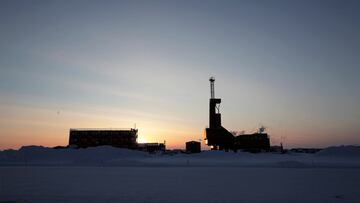Hurricane Milton: The real-life machines that control our weather
While cloud-seeding and weather control remain in the realm of science fiction, the real machines controlling our weather are fossil fuel infrastructure.


While conspiracy theories about government-controlled weather machines have gained traction online, the real culprits behind our changing climate are far more mundane yet vastly more impactful: oil rigs, fracking operations, and the fossil fuel industry at large.
The true weather machines
Oil production has been a major contributor to greenhouse gas emissions for over a century. Global oil production reached 103.43 million barrels per day in July. This massive scale of extraction and consumption has had profound effects on our climate, pushing up global temperatures.
Climate scientists warn that if global surface temperatures increase by 1.5ºC or more, irreparable damage will be done to the environmental systems that prevent climate catastrophes. The target to avoid this by the end of this century may already be unreachable.
There is no frame of reference. There are no words.
— Greenpeace Canada (@GreenpeaceCA) October 10, 2024
This is what a 15 foot hurricane storm surge looks like.
This is what refusing to act on the climate crisis looks like.
And if we carry on with Fossil Fuels as usual, it's going to look a whole lot worse than this.
💔 pic.twitter.com/zzneF8NYwy
Oil rigs dot coastlines and oceans worldwide, extracting crude oil from beneath the seabed. The Gulf of Mexico alone hosts over 1,800 offshore platforms. While impressive feats of engineering, these rigs contribute significantly to environmental degradation through oil spills, habitat destruction, and greenhouse gas emissions.
Hydraulic fracturing, or fracking, has revolutionized oil and gas extraction, particularly in the United States. By 2016, fracking accounted for half of of US oil production.
However, this technique comes with severe environmental costs:
- Water pollution: Each fracking well requires millions of gallons of water mixed with chemicals, potentially contaminating groundwater.
- Methane leaks: Fracking operations release methane, a potent greenhouse gas, directly into the atmosphere.
- Seismic activity: The injection of wastewater from fracking has been linked to increased earthquake activity in some regions.
The climate connection
Related stories
The expansion of oil production has had devastating consequences for our environment and climate. The burning of fossil fuels is the primary driver of climate change, responsible for about 75% of global greenhouse gas emissions.
This human-induced climate change is intensifying hurricanes like Milton. Warmer ocean temperatures provide more energy for storms to intensify rapidly, as seen with Milton’s wind speeds surging from 90 mph to 175 mph in just 12 hours.


Complete your personal details to comment